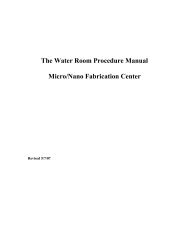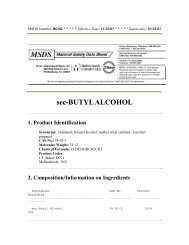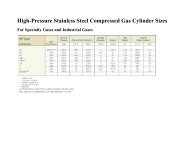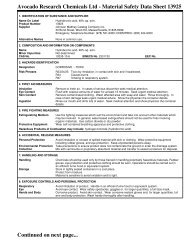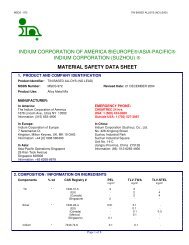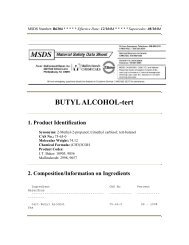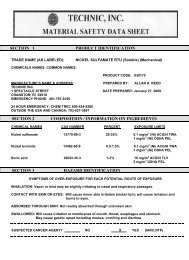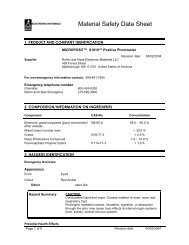Digital Temperature Controller Reference Manual
Digital Temperature Controller Reference Manual
Digital Temperature Controller Reference Manual
You also want an ePaper? Increase the reach of your titles
YUMPU automatically turns print PDFs into web optimized ePapers that Google loves.
TECHNICAL DESCRIPTION<br />
A maximum of six zones can have paddle control on the paddle thermocouples. The control<br />
is differential, integral (D.I) on the paddle, which is cascaded on the spike thermocouple. In<br />
this type of control, there are 6 control blocks with 6 unique parameters. For each parameter,<br />
there are 5 distinct temperature ranges in steps of 300 oC.<br />
A block diagram of the control loop is shown in Figure 2-3.<br />
2.4.1 Spike Control<br />
The inputs for the spike P.I.D. control are the spike thermocouple reading, spike setpoint<br />
and spike P.I.D. parameters. The spike setpoint is calculated from the profile table. If the<br />
setpoint is not given in the table, the value can be obtained by interpolation.<br />
2.4.1.1 Spike derivative block<br />
The derivative control is used to make immediate changes, whenever the thermocouples<br />
readings change. The output of the block is proportional to the slope of the temperature and<br />
the derivative parameter. Hence, an increase in the derivative parameter will increase the<br />
effect of the derivative function.<br />
The input to this block is the thermocouple reading and not, as in most systems, the<br />
deviation between the setpoint and the reading. It is, also, switched off before the P.I. control<br />
blocks. The effect of these two actions on the ramping is shown in Figure 2-2. As can be<br />
seen the overshoot is greatly reduced. The deviation between setpoint and temperature<br />
during ramping is equal to the Derivative Output (DO = slope x parameter).<br />
The inputs to this block are the current spike thermocouple reading and the derivative<br />
parameter in seconds. The spike derivative value is an average of different spike<br />
thermocouple readings taken over a period of time. This gives a slope or trend to the<br />
movement of temperature in units/s.<br />
The spike derivative output is the derivative value multiplied by the spike derivative<br />
parameter in units of degrees. This value added to the setpoint deviation (setpoint reading)<br />
gives the P.D. output. The P.D. output is limited to plus or minus the proportional band<br />
output.<br />
Figure 2-2 Ramping comparisons<br />
DIGITAL TEMPERATURE CONTROLLER REFERENCE MANUAL 2-5



